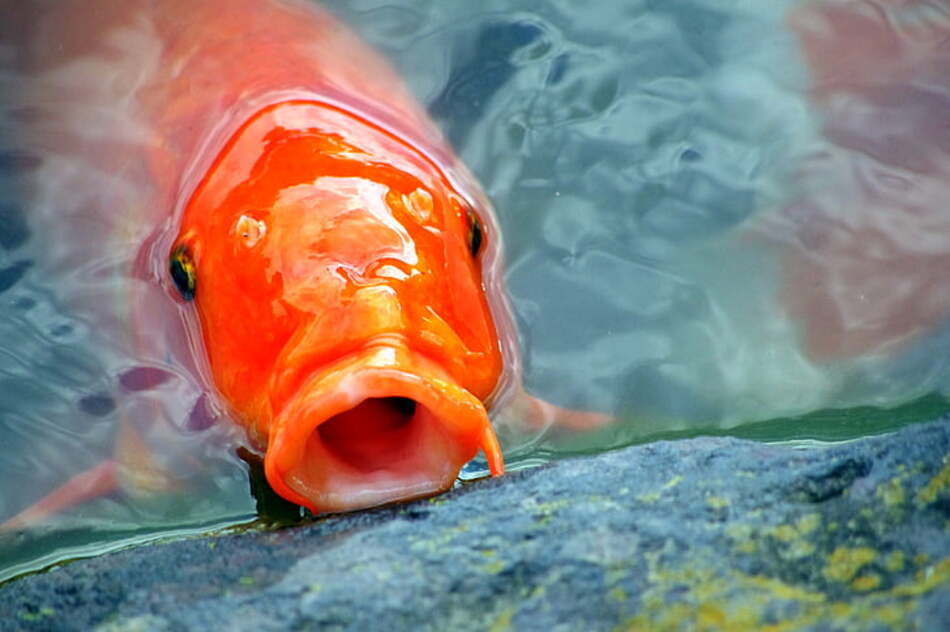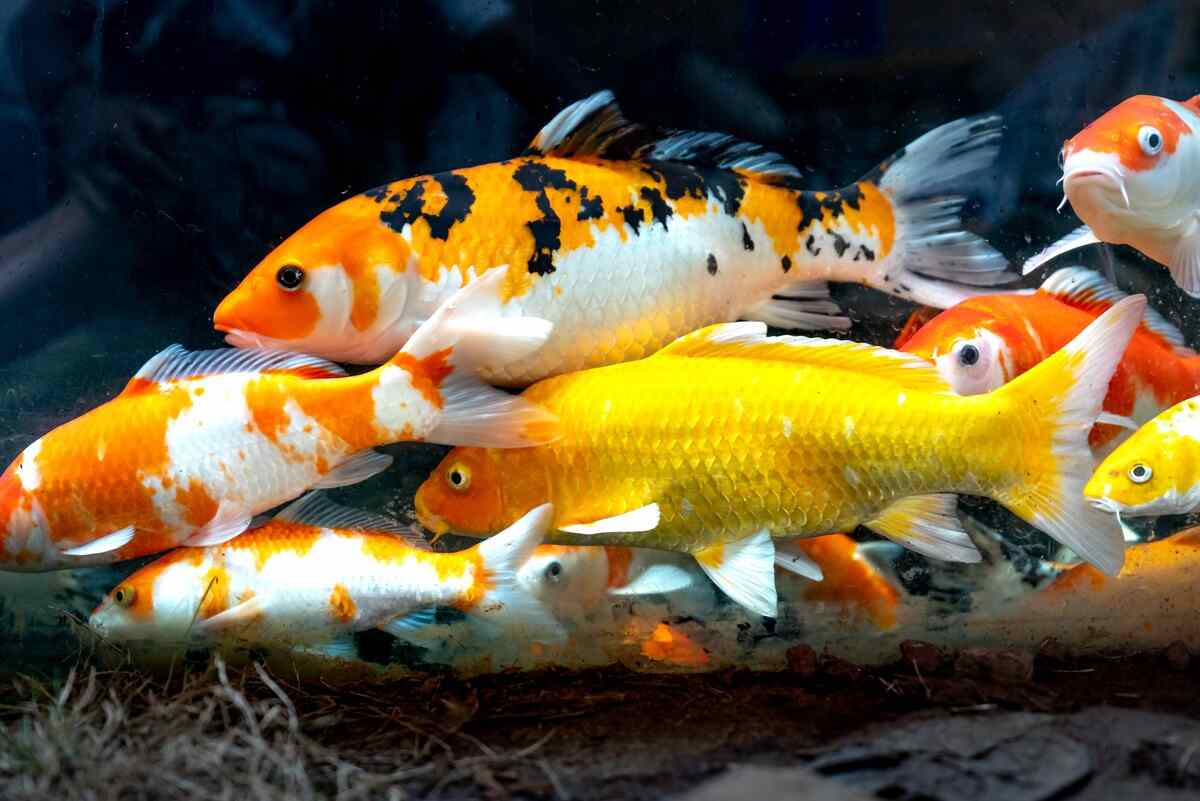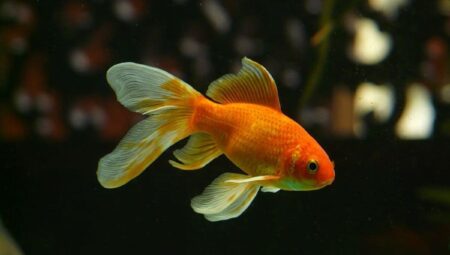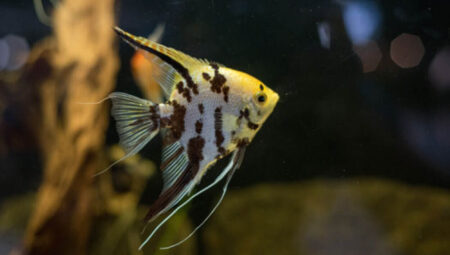In the fascinating world of aquaculture, Koi fish stand out as fascinating creatures that have won the admiration of enthusiasts worldwide. The allure of these vibrant and gracefully swimming fish goes beyond their ornamental appeal to explore the intricacies of their characteristics, care and cultural significance. For those who want to better understand koi fish, this comprehensive guide aims to address all the questions surrounding their unique characteristics and the art of creating a thriving aquatic environment.
Would you like to get to know the Koi Fish better?
Descendants of the carp, Koi have evolved over the centuries to become revered symbols of good luck, prosperity and perseverance in Japanese and Chinese cultures.
Beyond the technical aspects of Koi care, the cultural significance of these fish adds another layer of fascination. Rooted in ancient Eastern traditions, Koi have become a symbol of strength, endurance and transformation. Exploring their cultural aspects involves investigating the art of Koi appreciation, from the age-old practices of Koi breeding to the live koi shows that showcase these living works of art.
Whether you are an avid Koi keeper or someone looking to expand your understanding of these fascinating fish, this guide is a comprehensive resource for uncovering the mysteries and delights of Koi fish culture.
General Information about Koi Fish:
1. Species and Origin: Koi, scientifically known as Cyprinus carpio, are a type of ornamental carp that originated in Eastern Asia, particularly in China and Japan. They are descendants of the common carp and were selectively bred for their vibrant colors and unique patterns.
2. Size and Lifespan: Koi fish can vary in size depending on their age and breeding. On average, they can grow to be 12 to 24 inches in length, though some can reach over three feet. With proper care, koi can live for several decades, with some individuals exceeding 50 years in age.
3. Color Varieties: Koi are renowned for their diverse colorations and patterns. There are numerous varieties, including Kohaku (white with red markings), Taisho Sanke (white with red and black markings), Showa (black with red and white markings), Ogon (single solid color), and many more. The colors intensify as the fish age.
4. Body Shape: Koi have a streamlined, elongated body with a slightly rounded belly. They typically have four pairs of barbels, tactile organs similar to whiskers, around their mouths. Their dorsal fin is generally long and flowing.
5. Social Behavior: Koi are social and thrive in groups. They exhibit schooling behavior and enjoy the company of other koi and compatible pondmates. Their social nature makes them a popular choice for ornamental ponds.
6. Environmental Preferences: Koi prefer cool, well-oxygenated water. They can adapt to a variety of pond conditions, but a well-maintained environment with proper filtration and aeration is crucial for their health. They are hardy fish but can be sensitive to sudden changes in water parameters.
7. Feeding Habits: Koi are omnivores with a hearty appetite. They consume a varied diet, including high-quality koi pellets, fish flakes, and occasional treats like live or frozen foods. Overfeeding should be avoided, as it can lead to health issues.
8. Breeding: Koi breeding is a complex process that requires specific conditions. Breeding often occurs during the warmer months, and female koi can lay thousands of eggs. The offspring, known as fry, undergo a growth process, and their colors become more defined as they mature.
9. Symbolism: In Japanese culture, koi are revered symbols of perseverance, strength, and good fortune. The image of a koi swimming upstream represents overcoming adversity. The cultural significance has contributed to the popularity of koi in art, literature, and as ornamental elements in ponds and gardens.
10. Popularity in Water Gardens: Koi are popular choices for water gardens and ornamental ponds worldwide. Their striking colors, graceful movements, and cultural symbolism make them sought-after additions to outdoor aquatic environments.

Curious questions and answers about koi fish
1. Why are Koi Fish So Expensive?
Koi fish can be expensive due to factors such as their size, coloration, patterns, and overall aesthetic appeal. High-quality koi, often bred for specific traits, can command premium prices in the market. Additionally, the age and lineage of the koi, along with the breeder’s reputation, contribute to their value.
2. What do Koi Symbolize in Japan?
In Japan, koi fish symbolize perseverance, strength, and resilience. They are associated with good fortune, success, and overcoming adversity. The image of a koi swimming upstream against the current is a powerful metaphor for overcoming life’s challenges.
3. Why Do Japanese Love Koi Fish?
The Japanese have a deep cultural appreciation for the symbolism attached to koi fish. Beyond their aesthetic beauty, koi represent positive qualities, making them popular in art, literature, and as ornamental elements in gardens and ponds. The cultural significance contributes to the love and admiration for koi in Japan.
4. What Makes Koi Happy?
Koi thrive in well-maintained ponds with clean, well-aerated water. Adequate space, proper filtration, and a balanced diet contribute to their happiness. Koi are social fish, so having companions of similar size and temperament enhances their well-being.
5. Are Koi Fish Expensive?
Yes, koi fish can be expensive, especially high-quality specimens with desirable traits such as vibrant colors, unique patterns, and large size. The rarity and beauty of certain varieties contribute to their market value.
6. What Color of Koi is Lucky?
In Japanese culture, the color red is often associated with good luck and prosperity. Therefore, red or orange-colored koi, such as Kohaku and Ogon varieties, are considered particularly auspicious and bring positive energy.
7. How Much Does 1 Koi Fish Cost?
The cost of a koi fish varies widely depending on factors like size, color, pattern, and breeder reputation. Prices can range from a few dollars for smaller, common varieties to several thousand dollars or more for larger, high-quality specimens.
8. What Color Koi is Most Expensive?
The most expensive koi are often those with a combination of vibrant colors, distinct patterns, and flawless body conformation. Showa, Kohaku, and Taisho Sanke are examples of varieties that can command high prices, particularly if they exhibit intense reds and pure whites.
9. Are Koi Fish Aggressive?
Generally, koi fish are not considered aggressive. They are social and tend to get along well with other koi and pond inhabitants. However, individual temperament can vary, and during breeding seasons or if resources are limited, some aggression may be observed. Providing adequate space and maintaining a harmonious environment can minimize aggressive behavior among koi.




